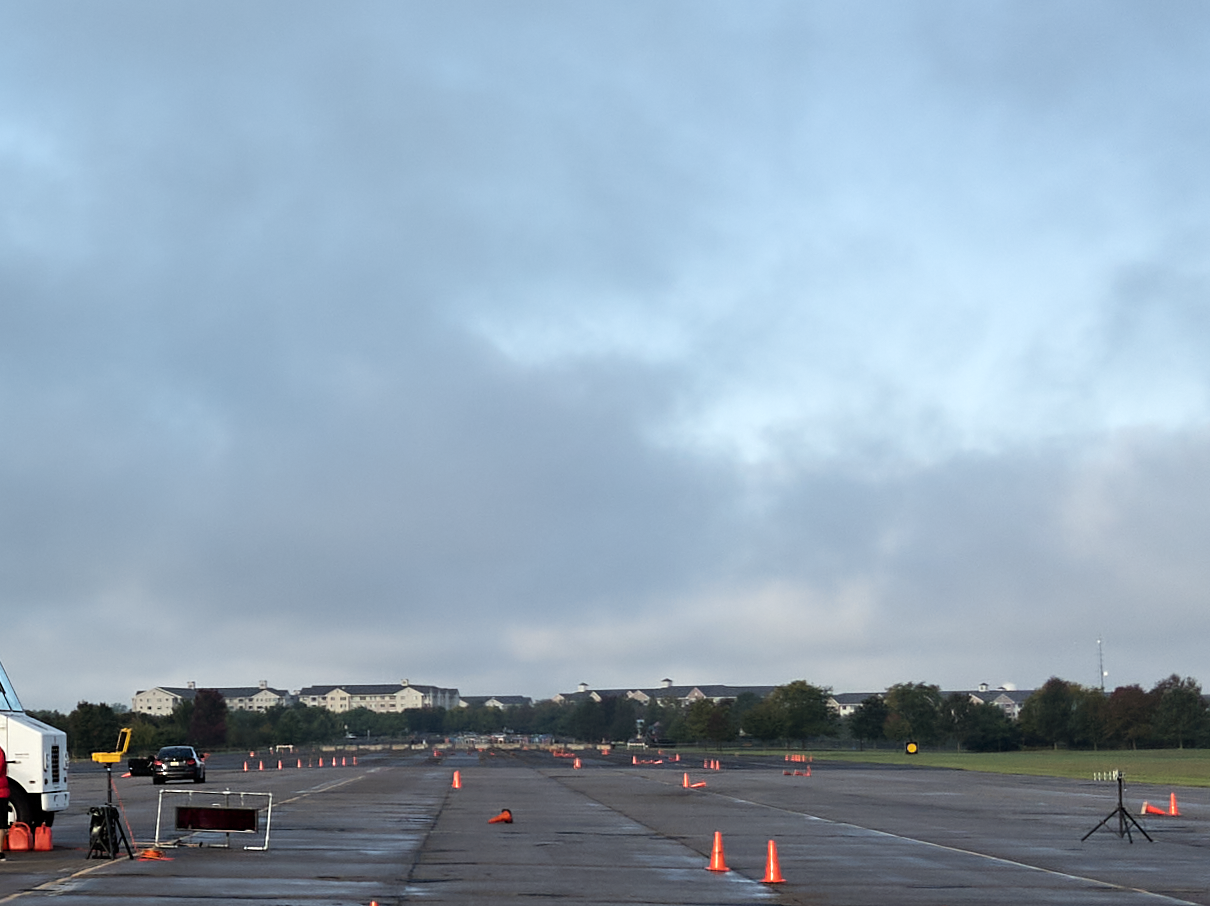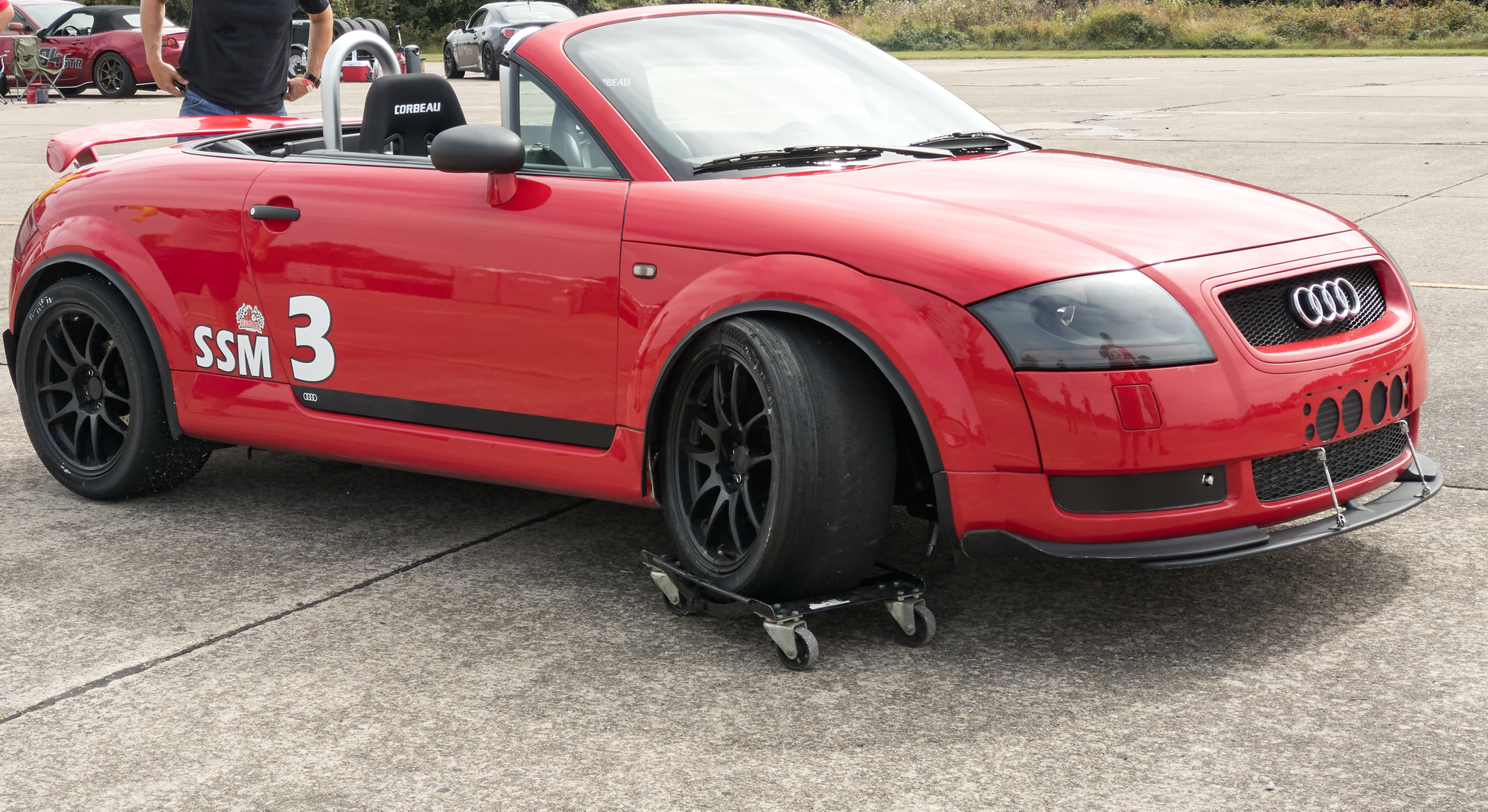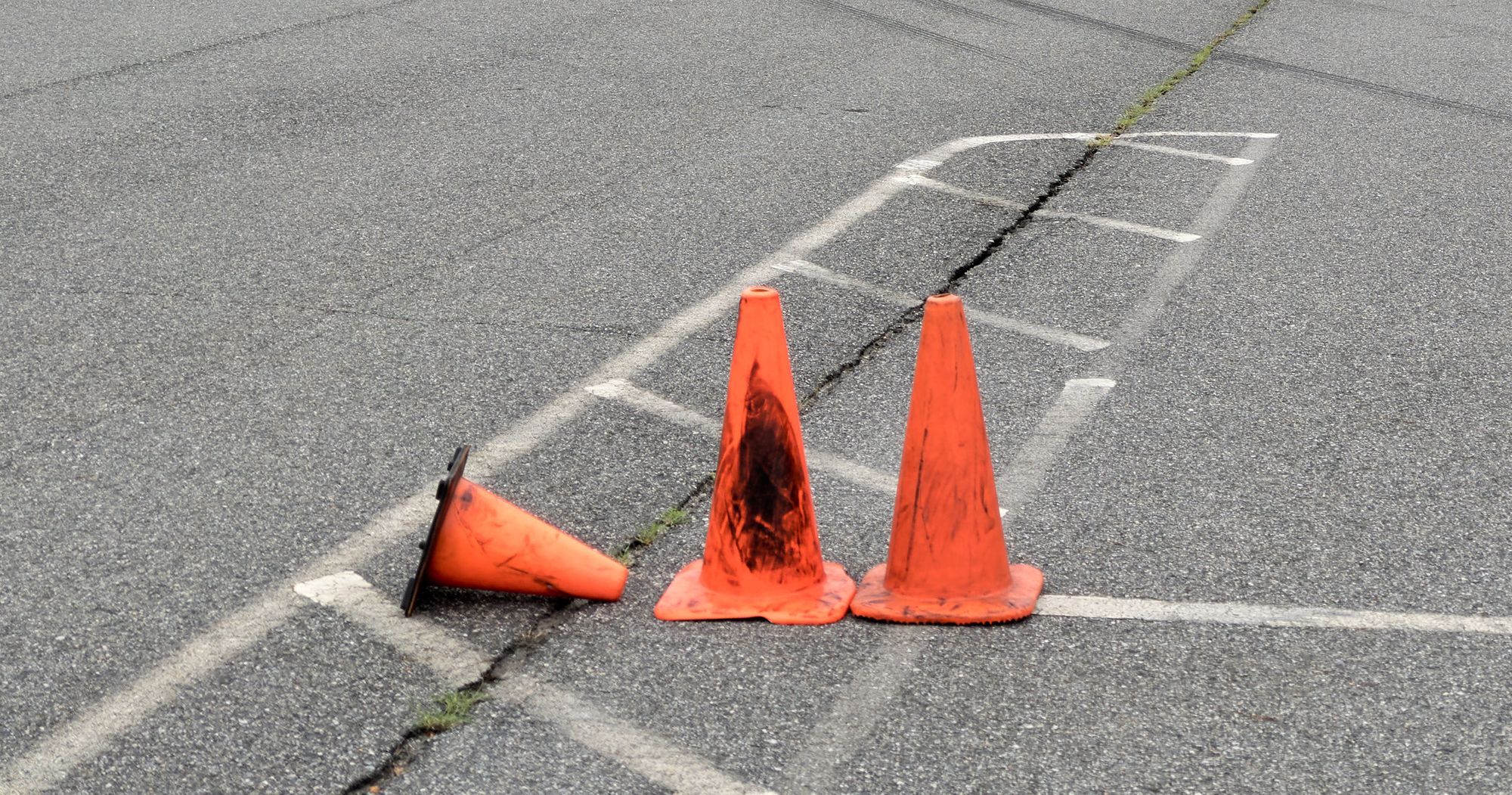Autocross is one of the safest and cheapest entry points into automotive sports. It will allow a driver to take his or her car to the limits in a forgiving environment and at forgiving speeds. It will teach that driver about the basics of performance driving: braking points, racing lines, car dynamics, and car control. But many potential enthusiasts overestimate the barrier to entry in the sport. That was me until late last year.
Before we start let's get something out of the way: this article is not a substitute for reading event rules and requirements, should you choose to register for an autocross competition. I wrote about what I've seen in events so far, but I've only attended a handful, and only with two clubs. Take the info here with a grain of salt, and do your homework.
In this article I'll address the questions I had when I was first looking into autocross:
- What is Autocross?
- What do I need to participate?
- What should I expect at an event?
- Is Autocross dangerous?
- Is Autocross expensive?
- How do I find events?
What Is Autocross?
Autocross is a motorsport where drivers compete on the fastest time over a course. The drivers are not close to each other on course. Autocross uses individual starts, i.e., one driver at a time, and times each driver from the start to the finish lines.
The course is laid out and marked using orange cones. The cones mark course limits, gates, and other obstacles that the driver must navigate. Times are thrown out if the driver fails to follow the course as indicated by the cones. Cone positions are indicated by a box drawn with chalk marks on the tarmac. Hitting cones in a way that knocks them over or moves them out of their boxes adds a time penalty to your time of 2s per cone moved*. The start and finish gates are often marked with cones of a different color than the rest.

Autocross emphasizes car control, not high speed. In most events cars will reach at most second gear. This is by design, for safety. Events take place in large flat areas, usually parking lots or unused airfields. The course is not known to the drivers ahead of time, so there's no opportunity to practice a course before the start, but there's an opportunity to walk the course before the day's runs begin. Events are usually volunteer ran, and participants are expected to help out in between driving stints, for example on course, stationed to reposition cones that have been moved or knocked over by drivers.
What Do I Need to Participate?
You're going to need a car1. Any car, more or less. The basic requirement is that it doesn't have a high center of gravity, so, for example, SUVs need not apply. Vehicles must pass a technical inspection—or tech—at the event. Passing tech generally boils down to basic safety, i.e., there are seat belts, the battery is firmly attached, your brake and accelerator pedals work, good tires, etc. Any stock car in good condition that meets the center of gravity criterion will likely pass tech.
You'll probably need a helmet. Pre-COVID, most events would provide loaner helmets, but these days that would be basically like having loaner face masks; so until we are past this epidemic, or even then if you don't like the idea of sharing helmets with complete strangers, you'll need to get yourself a helmet. SCCA rules list the helmet specifications that are accepted in official events, but most regional events are flexible with this, and will accept motorcycle helmets, for example. You should verify the helmet requirements with the organizers of each event.
You need car markers. Cars need to be numbered, and some clubs require markings for the class in which you are competing (e.g., CS in my case). In most events painter's tape is a perfectly acceptable way of displaying your car number and class. So, at the very least, you need some painter's tape.
That's it. Well, you'll also need shoes. Can't race in flip-flops, or bare-footed.
What Should I Expect at an Event?
Regional events are all-day affairs, for all practical purposes. Depending on your work assignment you may need to get there at different times, but newcomers will probably need to get to the venue early in the morning, between 7:30 and 8:30 AM. The area where the competitors are parked and prepping their cars is called the paddock. Find a spot, park, and go deal with registration and then tech.
Registration means signing in, signing any waivers, and checking in for your work assignment. With that out of the way you'll need to prep for tech. All that entails is to empty your car from any loose objects in the cabin and in the trunk, removing the driver-side floor-mats, and getting your helmet out. The SCCA sets up tech as a station that you'll drive to, where you'll follow the instructions of the inspectors. BMC sends the inspectors out to the paddock, and it helps to speed things up to leave the hood and trunk open, as well as the windows down.
At some point, probably around 9 am, the course will be open for walking. If possible there will be a beginners' course walk, where an experienced driver guides anyone interested through the course and gives tips and other very, very useful information. If you are a beginner you really should do this.
After that (or sometimes before the course opens) there will be a drivers' meeting, which is normally mandatory.
Most regional events take place over a day, with registration closing early in the morning, and runs taking place throughout the day. At the end attendees are expected to help tear down the course and collect the cones.
Is Autocross Dangerous?
It can be. I'll list here the risks that I think are the most important. This is how I assess my own risk. Risk tolerance levels are deeply personal, so you should do your own risk analysis.
- Hitting cones: Cone contact is almost a certainty in each event. Sometimes you graze them, sometimes you slide into them, sometimes you hit them head-on (I've done all these). Depending on impact angle and speed, you may do damage to your paint or even have pieces of trim dislodged off the car body. I haven't seen anything worse than that, but that's not to say there haven't been worse outcomes. The types of cones used in autocross are very flexible and have a soft surface, but they do have mass, so hitting a cone at 45 MPH head on is not fun. There's not much you can do about this, but you could try using racing tape or painters tape to reinforce more fragile bits of the car and protect the paint, and it might help. I invested in paint protection film when I bought my MX-5, which does a great job but isn't cheap.
- Mechanical stress: Autocross' short runs are not particularly demanding compared to, say, a half-hour on a race track; but it will cause extra wear and tear and push the limits of certain components in your vehicle. For example, the last generation of the MX-5s are known for having a fragile gearbox, and the stresses of autocross can push those past their limits. Aftermarket components can also lead to more failures: I've seen custom suspension component breakdowns, overheated engines, etc. There's been really weird things, like an emergency roll-bar deployment on a BMW convertible—not caused by a rollover, but by some sort of sensor malfunction. Mitigation here comes down to more proactive maintenance and more frequent inspections. But you need to be aware that high-performance driving will cause more wear and tear than normal driving, and is more likely to expose design weaknesses in OEM and aftermarket parts.

- Course hazards: This is venue-dependent. At Ripken, where the Brandywine Motorsports Club holds its events, the parking lot has light poles regularly spaced over the event area. The organizers2 ensure that course layouts avoid creating areas of high-risk, such as accelerating cars towards danger, but, once, I saw a car spin at the finish and hit its rear bumper against one of the poles, causing some damage. At the Warminster Park, where the Philly Region SCCA chapter holds their events, the track is wide open but somewhat narrow (an old airfield), so the course can get close to the edges of the tarmac, where there's grass. Grass can be very slippery, so if you miss a turn and skid towards the grass you won't stop very fast, and there are bushes and old structures on the grass (old aviation markers) that would cause severe damage to cars traveling off the track in those areas. It's up to each driver to decide whether the course layout is too dangerous to drive on, and act accordingly.
- Personal safety: As I mentioned earlier, events are mostly staffed by the attendees, so your first work assignments will undoubtedly be working on course, running back and forth in between competitors to fix cones that have been moved. Being on course for about an hour per work stint, with cars driving by every 10s or so, driven by drivers with varying levels of skill and judgment, poses a risk. Depending on course design you may find yourself uncomfortably close to a course section where there are lots of spins, for example. It's possible an out of control vehicle might come your way. It's up to you to maintain a sharp awareness, and to voice your concerns or request a reassignment if you feel uncomfortable with your station. Once more, it's up to each driver to decide whether they are comfortable with the risk.
Is Autocross Expensive?
Yes and no. Autocross is the cheapest organized motorsport that I can think of. Registration usually costs between $40 and $50 for regional events, and a decent, cheap road racing helmet is about $80 to $150, a one-time cost. You can participate with a completely stock vehicle, and no additional equipment or modification is required. I'd say that's not expensive for the experience.
Wear and tear is harder to quantify financially, and will depend on the vehicle. Frequent autocross participation will probably decrease the service interval for your vehicle, increasing maintenance costs. Things like brake pads and tires will likely need to be replaced earlier than normal.
If you become active enough in the sport you'll start to consider modifications to make your vehicle more competitive, and those can add up fast. Staying in stock classes will help control these costs. Check out my cost tracker page as a reference.
How Do I Find Events?
The website of record for autocross events is motorsportsreg.com (commonly referred to as simply "MSR"). As far as I'm aware, everyone uses that site to schedule events and manage registrations. I don't mean this as an endorsement, though I think the site works pretty well. But the two clubs of which I am a member use this site to setup their events, and there are many other clubs that do so as well. There might be other ways to find events, but MSR is my go to.
1 Two drivers may compete in the same car if you register accordingly, so technically you don't even need a car!
2 Disclaimer: I am a member of the BMC board of directors.


